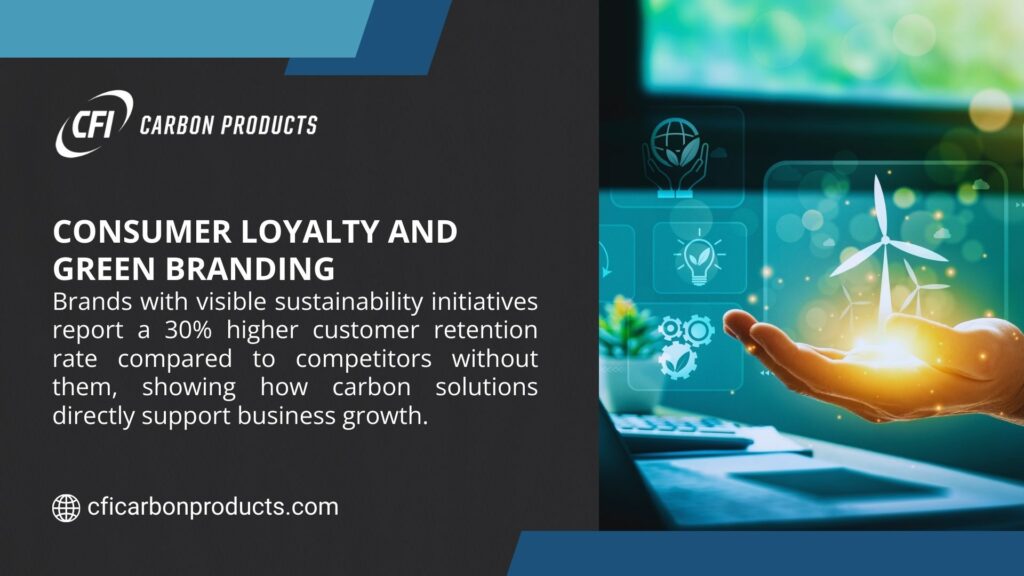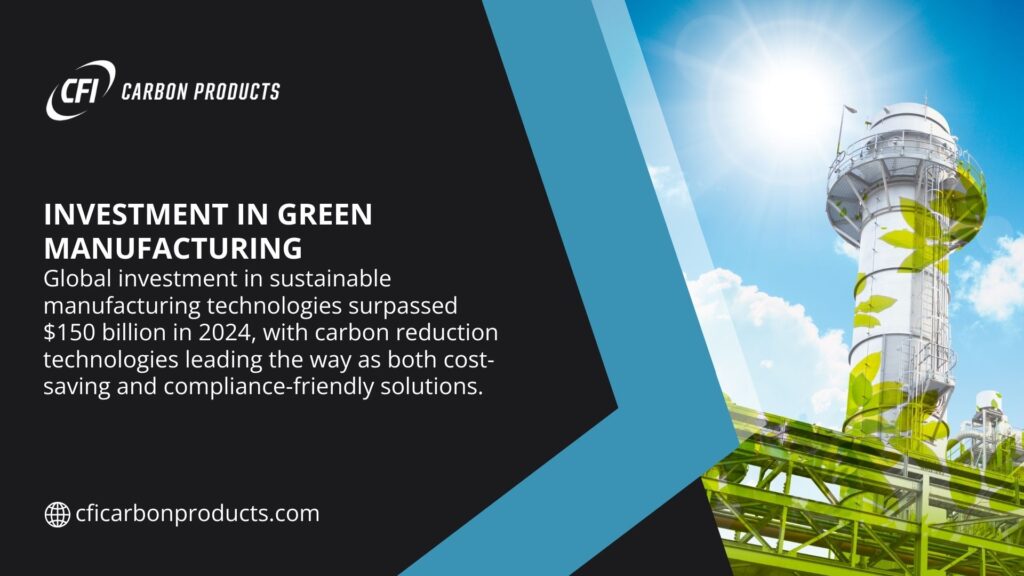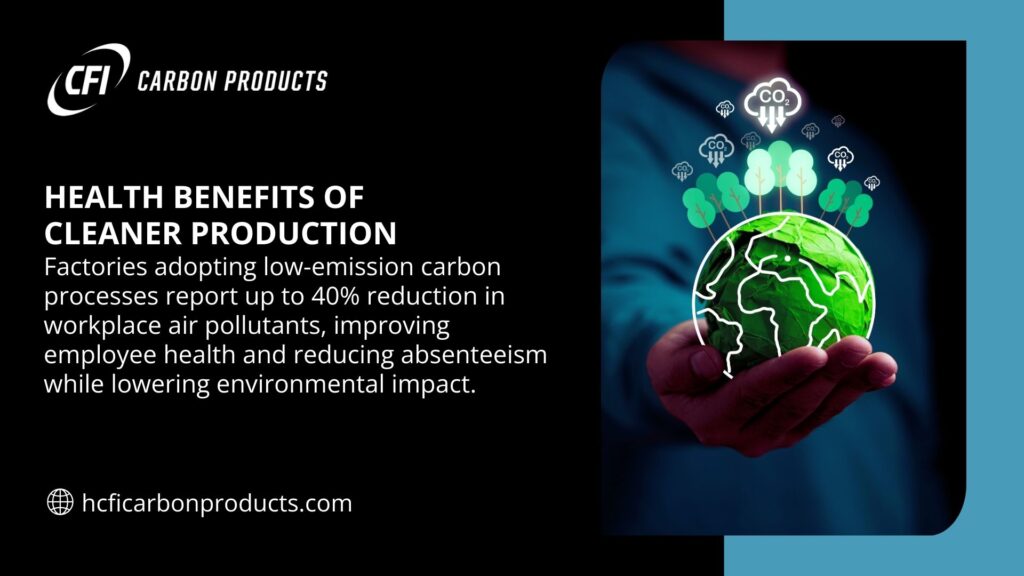Manufacturing has a problem. Actually, it has several problems, but the biggest one is that companies need to cut emissions without making their products worse. For decades, that seemed impossible. Green meant compromise. Better for the environment meant worse performance, higher costs, or both.
That’s changing fast. Sustainable carbon solutions are proving that environmental responsibility and superior performance are actually pretty good friends. The shift started quietly a few years ago, but now it’s everywhere. Companies that figured this out early are leaving their competitors behind.
78% of consumers now actively choose brands with clear sustainability strategies. Among Fortune Global 500 companies, green initiatives went from 23% in 2019 to 42% in 2022.
Sustainable carbon solutions work because they solve multiple problems at once. Take additive manufacturing – the sector grew from $19.34 billion to $23.42 billion in just one year. That’s 21.1% growth driven by technologies that reduce waste, enable complex designs, and support on-demand production.
The Technology Behind the Change
Carbon Materials
Old-school carbon black came from petroleum. New carbon materials use recycled tires, wood waste, even agricultural byproducts. The surprising thing? They often perform better than the old stuff.
Companies working with specialty additives are seeing this firsthand. These new formulations improve them while slashing environmental impact. One automotive supplier reported switching to bio-based carbon additives and seeing both lower costs and better durability.
Processing improvements matter too. Modern polymer processing additives let manufacturers run at lower temperatures with faster cycles. Less energy, higher output, better quality. It’s hard to argue with results like that.
3D Printing Changes Everything
Carbon 3D printing hit $5 billion this year and it’s growing 25% annually. These are production parts doing things traditional manufacturing simply can’t do.
NASA recently worked with 3D Systems to create titanium radiators that weigh half as much as conventional parts while expanding their surface area six times more efficiently. Try making that with traditional machining. You can’t. But sustainable carbon solutions made it routine.
Large-format additive manufacturing is reshaping the construction and marine industries. What used to take weeks now takes hours.

Automotive Solves the Weight Problem
Electric vehicles have a fundamental challenge: batteries are heavy. Every other component needs to be as light as possible without sacrificing safety or performance. Carbon solutions are solving this puzzle in ways that seemed impossible five years ago.
Additives for automotive coatings now create protective finishes that last longer while using less material. Thinner coatings that outperform thick ones. Weight savings of 15-25% are becoming standard in structural components.
The durability improvements matter as much as the weight savings. When parts last longer, replacement manufacturing drops. Lifecycle emissions fall even further. It’s a compound benefit that keeps paying off.
Aerospace Pushes Every Limit
Aircraft manufacturers obsess over weight because every gram matters across thousands of flight hours. The industry has become a testing ground for the most extreme sustainable carbon solutions available.
Coating additives now handle temperature swings from -80°F to 400°F while weighing less than traditional protection systems. Parts achieving 30-50% weight reductions while exceeding performance specs are in production aircraft.
The economics work because lighter aircraft burn less fuel for decades. Better durability means longer service intervals. The environmental benefits compound over the aircraft’s lifetime.
Construction Finally Catches Up
Construction traditionally moves slowly, but sustainable carbon solutions are forcing faster adoption. Powder coating additives eliminate volatile organic compounds while creating finishes that last longer than traditional coatings.
Building components that need less maintenance save resources throughout the structure’s lifetime. Recent projects report 20-35% waste reduction during construction, plus building lifecycles extended by years or even decades.
Additive manufacturing enables custom components to be produced on demand with minimal waste. Specialized brackets, architectural elements, and even structural components can be printed rather than machined from solid blocks.
| Industry | Weight Reduction | Waste Reduction | Performance Gain |
| Automotive | 15-25% | Lower lifecycle emissions | Extended durability |
| Aerospace | 30-50% | Reduced fuel consumption | Higher performance |
| Construction | Material optimization | 20-35% less waste | Longer lifespan |
| Electronics | Component miniaturization | Energy efficiency | Better conductivity |
Material Science Breakthroughs
Plastics Reinvent Themselves
The plastics industry is undergoing a complete transformation. Plastic additives manufacturers are creating formulations that incorporate significant recycled content while improving performance characteristics.
UV protection has been revolutionized. UV additives for plastics now extend outdoor service life dramatically while reducing material thickness requirements. Products last longer in harsh environments while using less material to begin with.
Paint formulations benefit similarly. UV additives for paint create coatings that maintain appearance and protection longer while reducing volatile emissions during application. Some formulations report 50% longer service life.
Rubber Gets Sustainable Without Compromise
Rubber manufacturing faced a tough choice: performance or sustainability. Sustainable carbon solutions eliminated that trade-off. Rubber additives now enable high-performance compounds that meet demanding specifications while incorporating renewable materials.
Elastomer additives improve processing efficiency while extending product life. Manufacturing uses less energy while products last longer. Both ends of the lifecycle get better simultaneously.
Bio-based carbon sources can replace 60-80% of petroleum-based materials in many applications without performance compromise. The tire industry is proving this works at scale.
Natural Materials Enhanced
Wood and other natural materials benefit from sustainable carbon solutions too. Additives for wood coatings provide protection that lets wood compete with synthetic alternatives while maintaining environmental advantages.
Advanced coating systems enable wood products to handle moisture, UV exposure, and thermal cycling that would destroy untreated wood. Service life extensions of 300-500% aren’t uncommon.

Global Patterns
Sustainable carbon solutions adoption varies by region based on regulations, economics, and infrastructure. Developed markets lead in high-performance applications. Emerging markets focus on cost-effective implementations.
Technology transfer through multinationals facilitates global deployment while supporting economic development. Regional supply chains enable local implementation while reducing transportation emissions.
Supply Chain Evolution
Success requires collaboration across value chains. Supplier engagement programs ensure sustainability commitments extend throughout supply chains, multiplying environmental benefits.
Transparency systems verify sustainability claims while supporting continuous improvement. Stakeholder confidence increases while identifying opportunities for further enhancement.

Get Carbon Solutions That Deliver Results
Manufacturing companies need sustainable carbon solutions that improve performance while cutting environmental impact. CFI Carbon Products specializes in Austin Black 325, a high-performance carbon black that helps manufacturers achieve both environmental and performance goals without compromise.
Austin Black 325 delivers proven results across automotive, aerospace, construction, and electronics applications. This advanced carbon black provides the performance characteristics manufacturers demand while supporting sustainability initiatives. Technical expertise ensures successful implementation that delivers measurable environmental and economic benefits.
Companies ready to move beyond traditional approaches can access Austin Black 325 for diverse manufacturing applications. We’ll show you how Austin Black 325 can improve your operations, reduce environmental impact, and position companies for success in sustainability-focused markets.

